Gardners Art Through the Ages 4th Edition Audiobook Greek
Fine art Through the Ages
Helen Gardner's legacy and the future of art history textbooks
"Who controls the past controls the hereafter.
Who controls the present controls the past."
— George Orwell
The Racket
For near students' first higher-level Art History form, "Gardner's Art Through the Ages" is the required textbook purchase, now in its 16th edition since get-go being published in 1926.
Re-editioning textbooks is a typical practice in the publishing industry, sending professors and students e'er searching for the well-nigh upwardly-to-date edition before the get-go of a semester, providing the latest and greatest information available for coursework. Finding the latest editions in used condition can be a frustrating experience and whether new or used…expensive, typically costing students more than than a hundred dollars per textbook.
Is this price gap between editions worth information technology for professors and students if the gap between editions is only two or three years? Permit's compare the 1st and 16th editions of "Gardner's Art Through the Ages" to notice what nearly a century has done to the way, construction, and communication code of this historical textbook to learn whether all the re-editioning racket is worth the publisher's time and students' oft borrowed coin.
Onetime & New
Style
We know not to guess books past their covers, only at first glance, the differences between these books are drastic. The 1st edition's dark teal sail wrapping the hardback encompass is embossed past a small golden oval containing a flying heron, a large local bird of the Midwest. The icon was appropriated from a mitt-engraved money by Dexamenos, a 5th-century Greek coinmaker, which is featured in the book. Gardner'south first edition fits nicely in the easily, is easily portable, and looks like whatsoever other fiction or nonfiction book yous'd from the 1920s. In fact, if you were looking at a row of books published in the '20s on a bookshelf, you wouldn't be able to distinguish them from ane other without reading the championship on the spine.
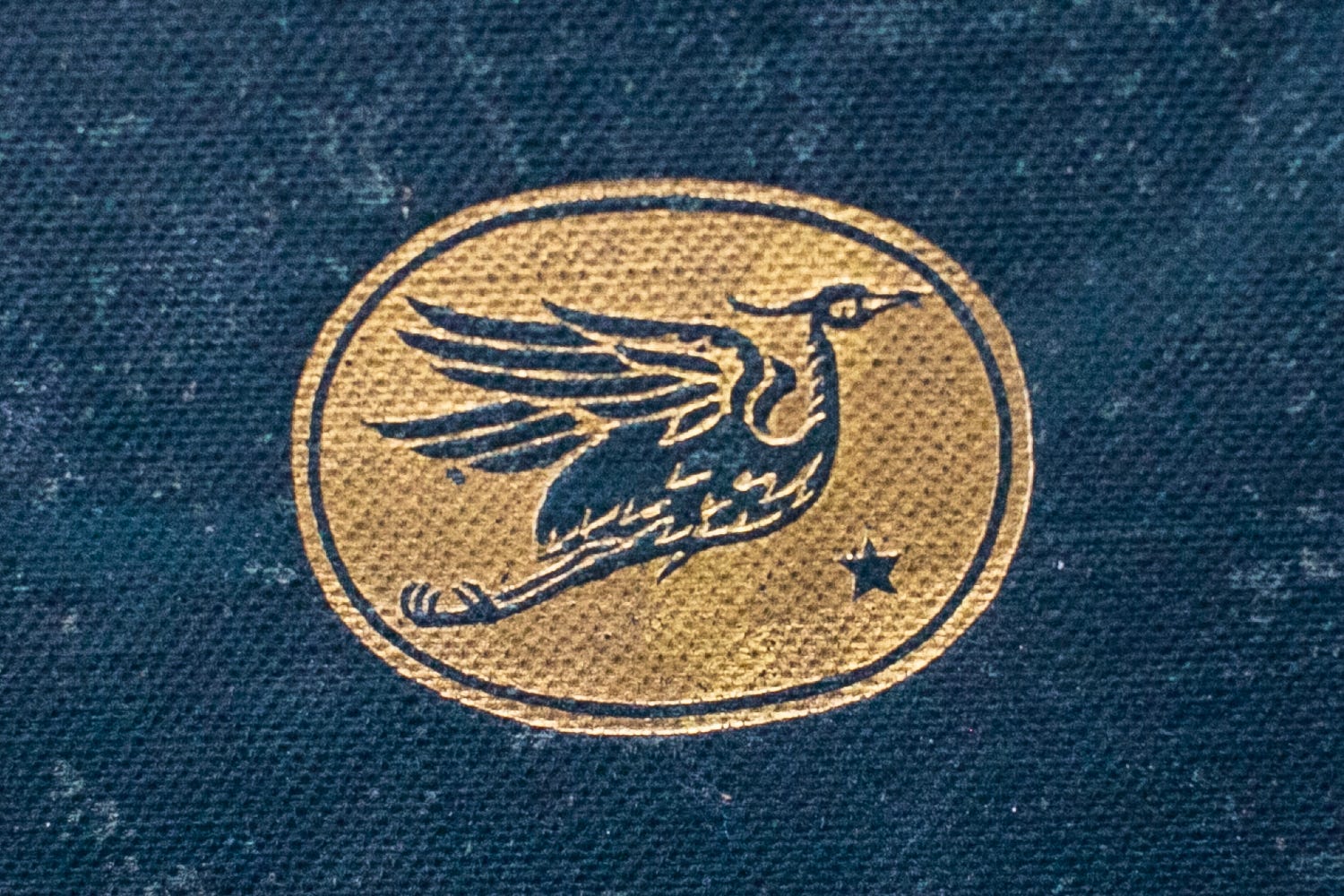

Right: Dexamenos. Coin of a flight heron, signed "Dexamenos epoie Chios". The University of Oxford.
Helen Gardner (1978–1946) wrote the first edition while educational activity Art History at the Art Institute of Chicago. The idea arose while searching for a expert art history textbook to prescribe her new students and institute a lack of acceptable textbooks, and then she created her own. Her first edition appears like whatever other book from its time nevertheless information technology was the starting time of its kind. Large, pic-heavy textbooks weren't common back so because the printing press was a relatively newer invention and there was a limited adequacy to print color pages in a price-efficient fashion.
By contrast, the 16th edition is twice equally large at nine x 12" and 2.2" thick, decorated from edge to edge of its covered with a cropped photo of Johannes Vermeer's classically painted Allegory of the Art of Painting, blowsy with a clean Helvetica typeface delivering the book'south title, author, and edition number in a block fit together similar a puzzle of unlike weights and sizes. The book is uncomfortable to concord in the easily and impossible to leaf through while holding with two easily. The thought of shouldering the 1,264 glossy-pages plus hardcover in a backpack is cringe-worthy… this volume belongs on a coffee table.

Right: Embrace of Fred S. Keliner's "Gardner's Fine art Through the Ages". 2019. 16th edition.
Inside, the layouts vary drastically. The beginning edition features 30 chapters on rich bail paper with spacious margins surrounding each spread. The texture of the paper feels organic with layouts comprised of roughly sixty% text, 40% black & white images and diagrams. In that location's a grouping of iv color photographs obviously created using film photography near the cease of the book. The typography presents one serif type in a diversity of weights, capitalization styles, and sizes, comprising five levels of hierarchy.
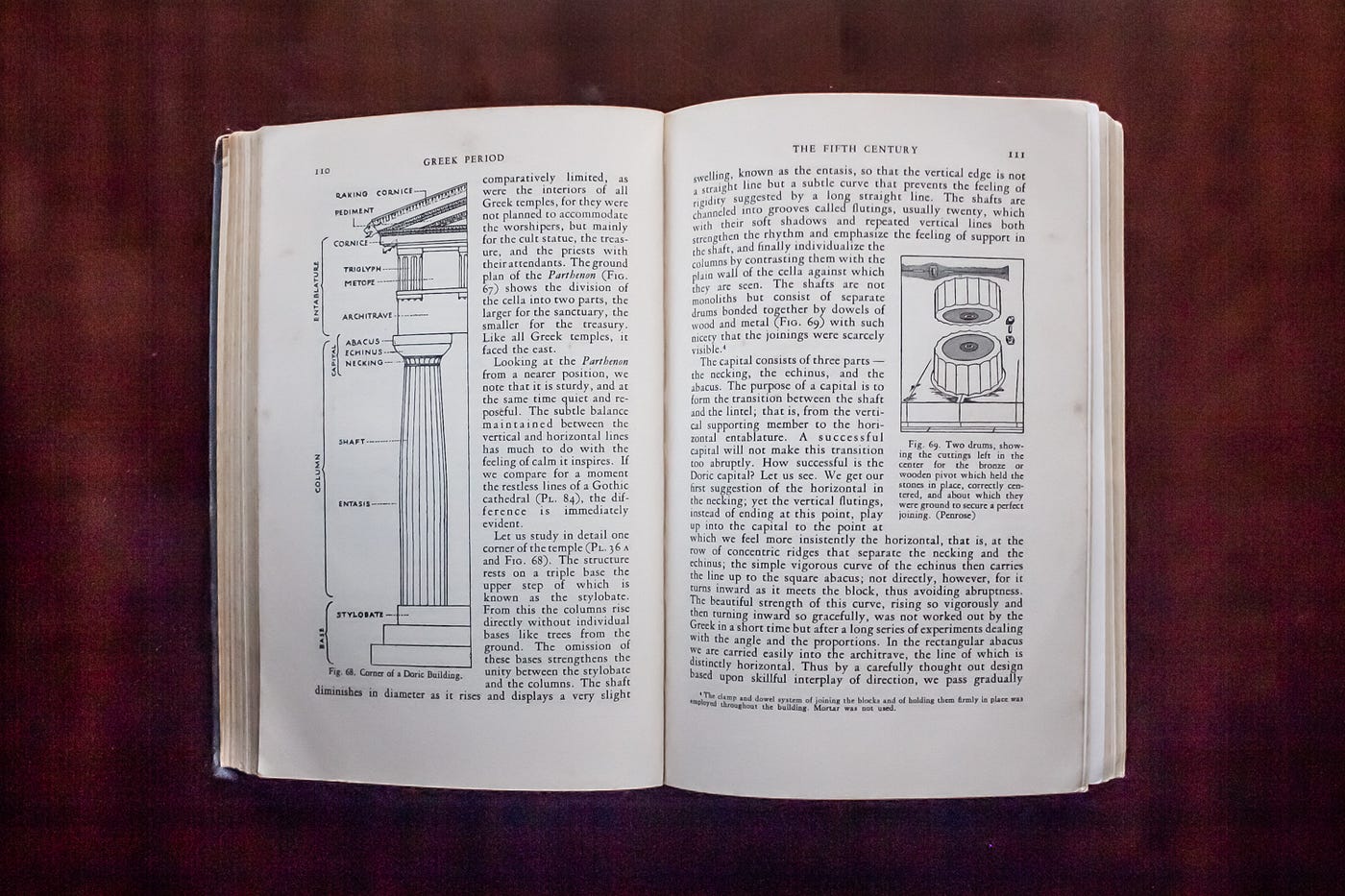
When leafing through the 37 capacity of the 16th edition, readers are met with glossy, thick newspaper featuring a wide range of colorful diagrams, graphs, and photographs presenting the world's historically significant artworks in context with text composing 40% of the volume and images threescore%. The typography is varied; a mixture of sans serif and serif typefaces of different sizes, weights, and capitalization styles comprise a dynamic 23 levels of hierarchy.
In effect, Gardner's offset edition is text-driven while the 16th is image-driven, creating two entirely different reading and viewing experiences.
Context
'The Roaring 20's' knew zilch of abstract expressionism, Andy Warhol, or Banksy. Information technology knew aught of nuclear bombs, postmodernism, the internet, The Expressionless Sea Scrolls, or Standard of Ur. These milestones were unimaginable to Gardner continuing in front of her students. As a result of the era, the first edition describes artworks as they should be understood, consummate with diagrams about how to view and understand space, form, and other elements that make a picture to the Western mind.
Past design, the 16th edition provides a contextual history for each continent and country; respectful of civilization & society from where art originates effectually the world. Postmodernism, a perspective presupposing hierarchies of values and frames of references is so omnipresent, a student facing such a heap of information faces a void of an author's narrative. Past sifting through timelines diagrams, geographical maps, and vibrant photographs, content must be deciphered and contextualized by the student, placing the responsibility of perspective in the student's easily. Gardner'south first edition is the opposite—it's clear she believes herself to be the authoritative voice of Fine art History who shares a thoroughly researched story to the reader.

At present, Gardner passed away in 1986, so who'due south writing are we reading in the 16th edition? None other than Fred Kleiner's… whose C.Five. is decorated with a Ph.D. from Columbia Academy, over 100 published articles, a fellowship from the Guggenheim Foundation, and a slew of other scholarly accomplishments. To exist as decorated every bit Kleiner in a population that has tripled since 1926, it'due south worth naught academia has become three times as competitive… his perspective of cognition and history must exist as postmodern as the times we live in. Afterward all, his career depends on information technology.
The bottom line… the latest edition is philosophically more accessible for a student opening up a volume instead of a laptop. If the dated authoritative narrative of Gardner's start edition is preferred against the multifaceted perspective of the 16th, the reader's perspective would be blunted by comparison.
Communication Lawmaking
IPads, Kindles, Audible, and Amazon accept uplifted the publishing industry. Both of these books are artifacts from academics who researched, wrote, and collected data intended to be shared on physical paper. In 2019, the average person spends 277 minutes on their phones per day, checking it on an average of 77 times, engaging with media that responds. If the entirety of either of these books' content were hyperlinked, interactive, and available online, much similar Wikipedia (which demolished the need of Encyclopedia Britannica book collections) students would exist engaged in a way they're already familiar with. Further, if a painting could be zoomed in to be viewed more than closely, a sculpture rotated to be viewed from a unlike perspective, and a human vocalisation audibly translating the language of ancient Egyptian hieroglyphics to English language, why has this technology non been created as a resource for students under the name of Gardner?
These innovations would serve every young Art History student in their native engineering and provide a richer feel that wouldn't tear holes in their backpacks past the weight of information technology being carried across campus.
Value of the 1st Edition
Despite the inadequacies of books in today's age, it's easy to argue why the 16th edition is superior. It wins, just there'southward a history of Fine art History in the 1st edition.
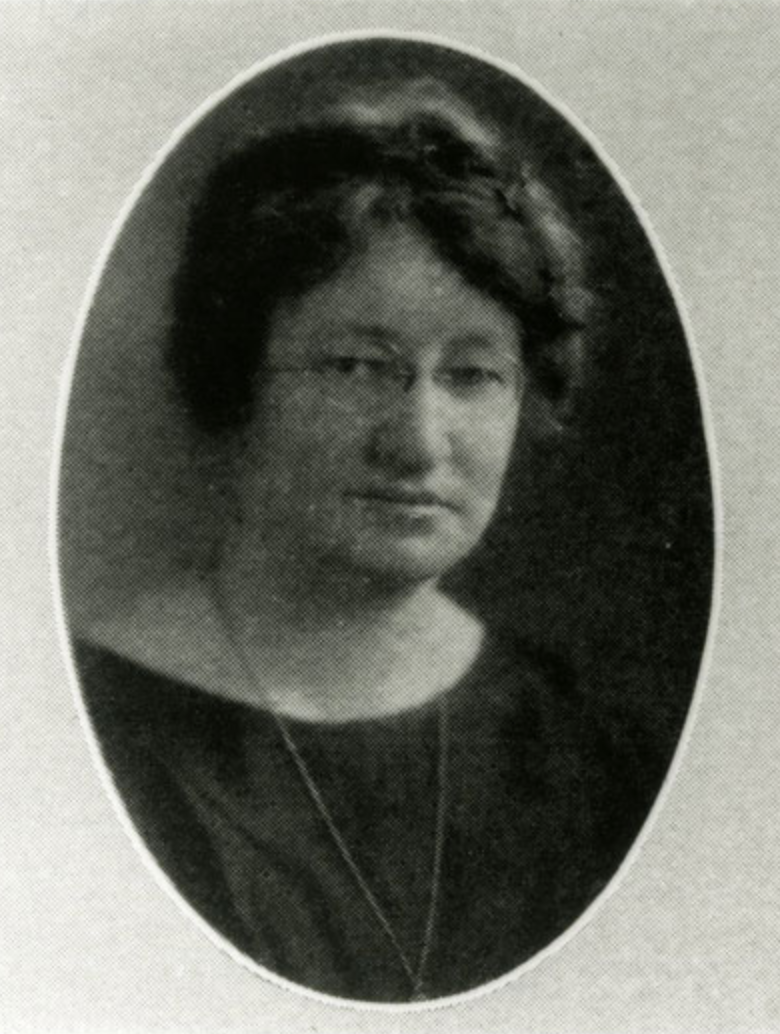
When Helen Gardner fix out to provide a useful production for students in colleges & universities, she was changing our perspective of the world. She was pioneering what it meant for women to be scholars in a field that was led past men with beards and pipes. She created a book that has been re-editioned 16 times because Fine art History has proven itself to be a valuable field in the humanities and this serial of books has proven itself useful to the professors who prescribe it.
Imagine Professor Gardner standing in front of a room of Fine art History students at the Fine art Constitute of Chicago. Men in Oxford numberless and flappers smoking cigarettes were ushered into a global perspective of humanity past a stiff intellectual woman who wrote the book on Fine art History—a book that is nevertheless used a century later past students at Ivy League, Big 10, and community colleges. The 1st edition may not be useful to students today, but to an Art History scholar its historical significance becomes sentimental; thus monumental in value.
Price for Admission
Equally I write this article in May of 2019, a re-create of the 16th edition is listed at $231.95 but runs at a discount of $173.25 on Amazon.com. At that price, students are paying for admission to the highest quality printed photographs of artworks delivered with contextual and historical information organized conceptually and historically (equally opposed to historically alone, like the 1st edition) with discussion guides and questions to help professors and students learn collaboratively. The style is contemporary, clear, with a layout that doesn't spare an inch of paper. The same tin be said for the 15th edition of the aforementioned book only $25 on Amazon.com, which was published simply three years agone in 2016. With such minor revisions and insignificant art historical findings in the span of three years, the comparing is infinitesimal.
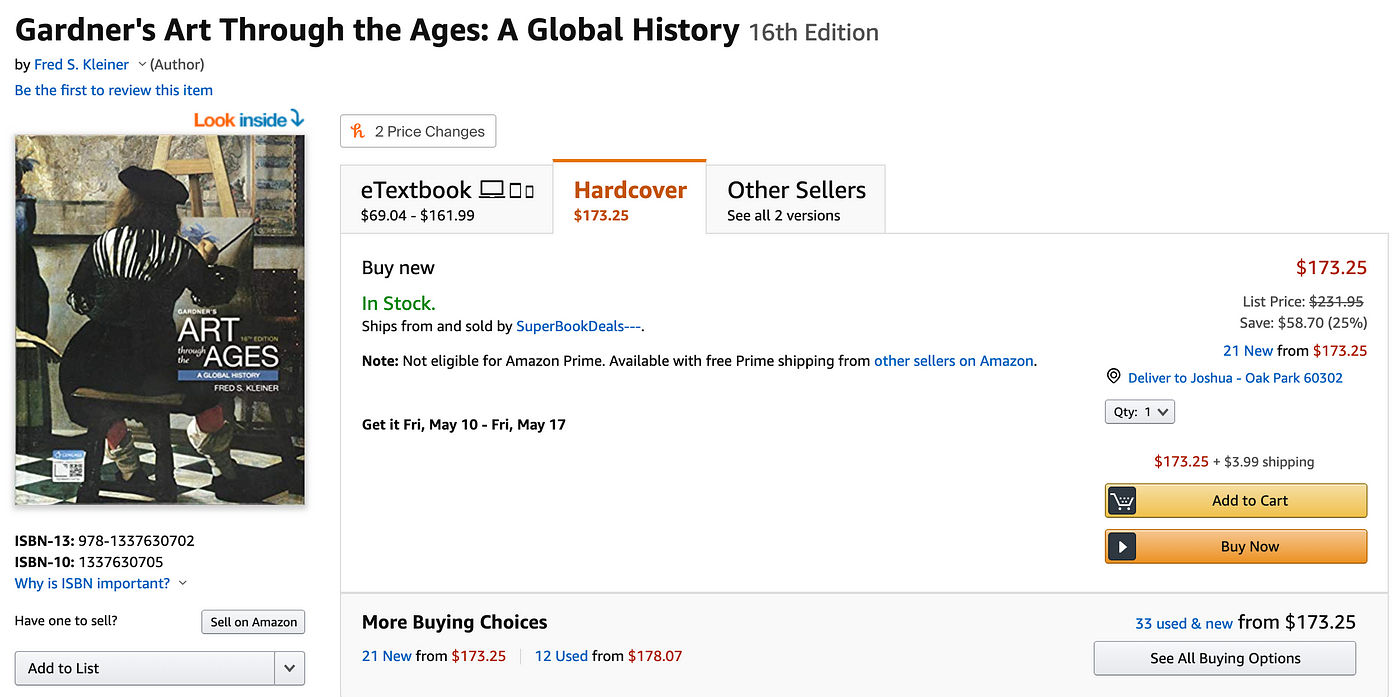
Turning the Sharp Corner
In the 21st century, nosotros witnessed the autumn of Encyclopedia Britannica and the rise of Wikipedia. Hyperlinked, participatory, and interactive content has influenced not just how much information is out at that place, but how nosotros sympathise information technology. If Gardner's Art Through the Ages is to survive (and, there'south a case to be made for why it shouldn't), the code of its content must evolve into an application or website that provides value the same way Google and Wikipedia humans all over the globe if it intends to go along upward with us. Most a century has passed and we're in an age when data is free and learning experiences are not valued past the weight of two.2 lbs. of paper — they're valued past the level of engaging, interactive, and meaningful content.
Inevitably, the 1st and 16th editions both fail at providing these feel without a professor and the current audience of students will swiftly sell the ii.2 lbs. afterwards the class is over because it's authored by a white male at the top of his academic game making coin off a volume that at one fourth dimension really meant something more and provided something that couldn't exist found anywhere else.
Textbooks should exist re-editioned if they're updated with more than accurate articles, amend-organized content, and new studies that have inverse the field. Just, it'south time academic books similar this mean something more and impact young students the way they should without breaking the banking company.
Imagine a educatee from 1926 paying the toll of a full-color edition like the 16th. It would've cost a fortune and for the target audience of higher students to purchase a full-color textbook is ridiculous. So, why did Gardner publish such a colorless book and get out her students at the School of the Art Institute of Chicago (SAIC) shorthanded? Because some of the artworks she discussed with them were down the hall at the Fine art Plant of Chicago, one of the largest art museums in the world.
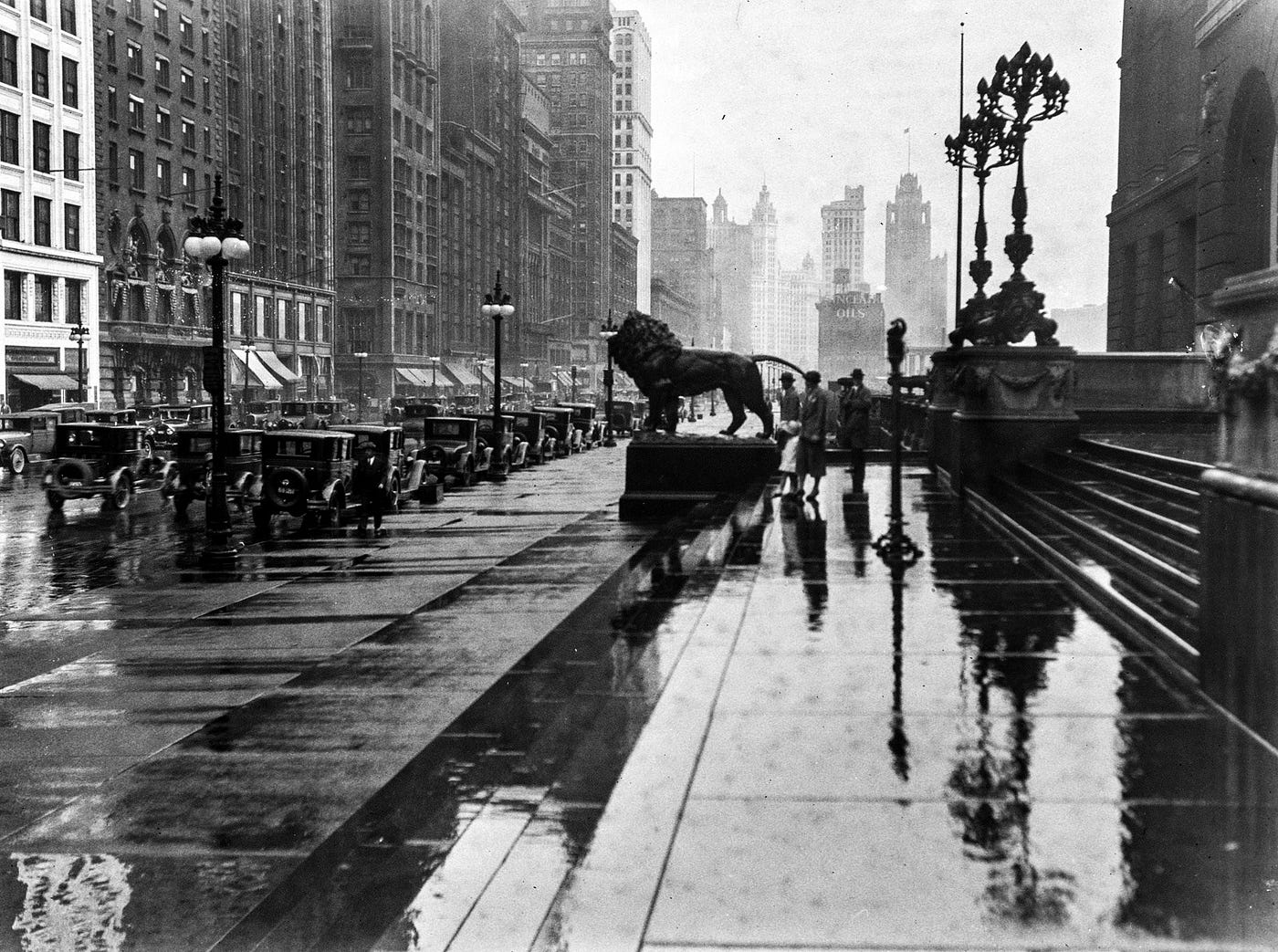
The Art Establish of Chicago. holds one of the deepest and almost diverse art collections so Gardner knew her immediate audience of higher students who she taught and they didn't suffer from the lack of color imagery. Students across the country, still, nosotros're express to this book declining to offer something more… the problem Gardner solved by publishing the commencement comprehensive book on Art History changed the education of fine art history. She delivered a take-abode version of the well-nigh important artwork from her lectures from the galleries in the Art Institute of Chicago and these lectures were spread using the best technology bachelor in 1926 — the printing press.
A Vulnerable Legacy
What will proprietary academics do if their content is non making them equally much coin, but proved more useful and engaging for students? What will publishing companies exercise if their content is downloaded and shared without permission?
Well, we don't take to look far to reply such questions. The precipitous corner Blockbuster Video'south 9,094 storefronts took dwindled them to 1 because of internet streaming. Yahoo's stock dropped from $118.75 to $8.xi due to internet search engines. And, Border's 399 bookstores are now extinct due to the digital marketplace.
Despite Encyclopedia Brittanica'south autumn, I nonetheless constitute the best information about Helen Gardner on its company's website. Maybe her legacy will survive past offering the best information in the aforementioned manner equally Encyclopedia Britannica, but these books struggle to maintain Gardner'due south integrity and what she stands for. Let's respectfully put her legacy to rest and let the students of tomorrow discover the field of Fine art History the way we do things in the Data Age.

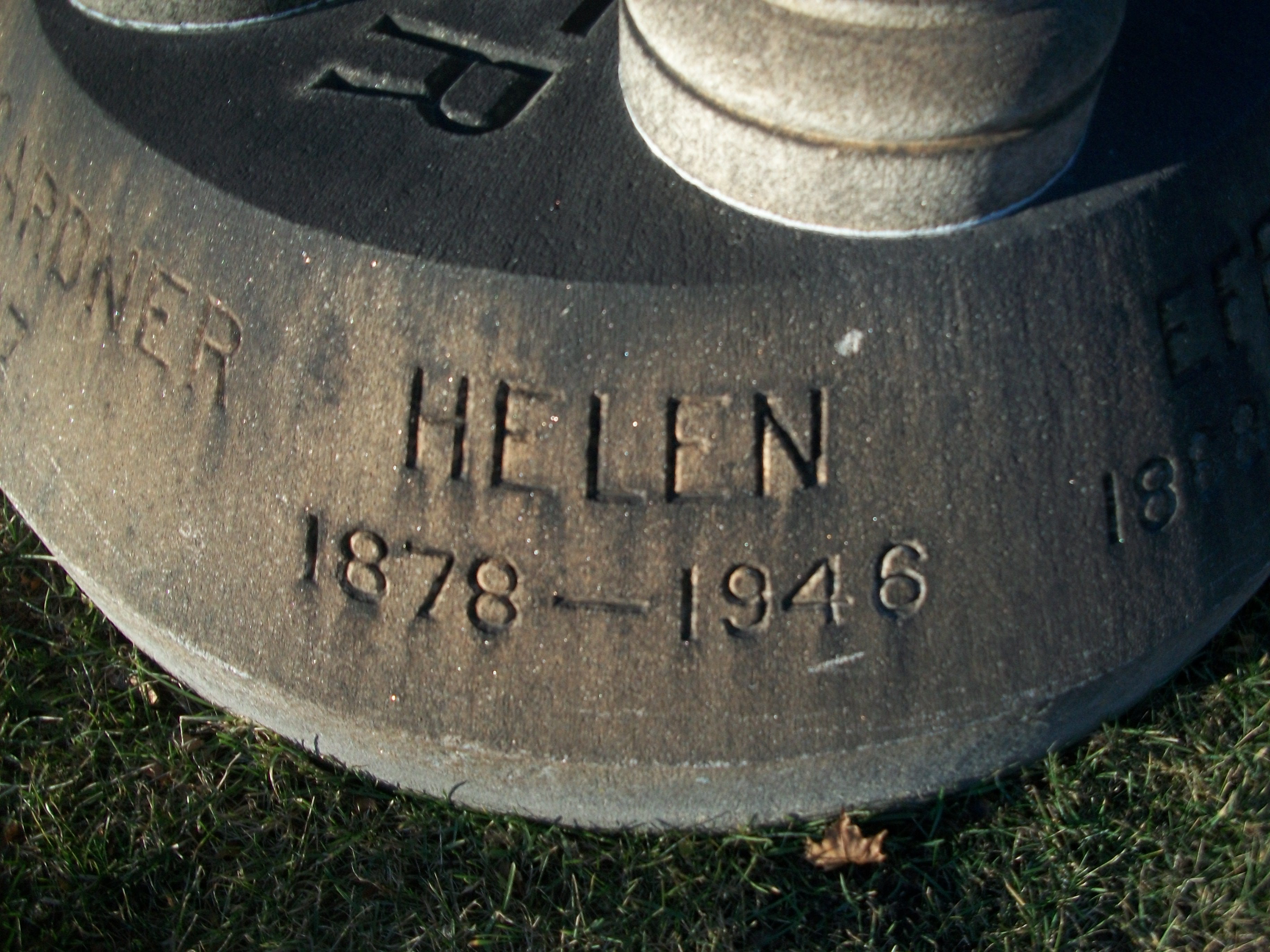
Works Cited
- Dexamenos. A flying heron, signed "Dexamenos epoie Chios". The University of Oxford.
- Helen Gardner. From The Statuary Lion, 1925. "Making History: Women of the Art Institute," Case three, Ryerson & Burnham Libraries, July 5–September five, 2011
- Gardner, Helen, Richard Grand. Tansey, and Fred S. Kleiner. Gardner's Art Through the Ages. 2018. Print.
- Gardner, Helen. Gardner'south Art Through the Ages. 1926. Print.
- Britannica, The Editors of Encyclopaedia. "Helen Gardner." Encyclopædia Britannica, Encyclopædia Britannica, Inc., 13 Mar. 2019, www.britannica.com/biography/Helen-Gardner.
- "Borders Group." Wikipedia, Wikimedia Foundation, eleven Mar. 2019, en.wikipedia.org/wiki/Borders_Group.
- "History of Yahoo!" Wikipedia, Wikimedia Foundation, xi Apr. 2019, en.wikipedia.org/wiki/History_of_Yahoo!
- "Blockbuster LLC." Wikipedia, Wikimedia Foundation, 9 Apr. 2019, en.wikipedia.org/wiki/Blockbuster_LLC.
- "World Population by Twelvemonth." Worldometers, www.worldometers.info/world-population/world-population-by-year/.
- "Fred S. Kleiner." BU, www.bu.edu/ah/profile/fred-s-kleiner/.
- Helen Gardner's Gravesite. Andy Gappa. https://www.findagrave.com/memorial/37625101/helen-gardner
- "Derrida — Defining Deconstruction." YouTube, YouTube, 6 Sept. 2008, www.youtube.com/watch?v=vgwOjjoYtco.
Source: https://joshuahoering.medium.com/art-through-the-ages-9069e6d8ef23
0 Response to "Gardners Art Through the Ages 4th Edition Audiobook Greek"
Post a Comment